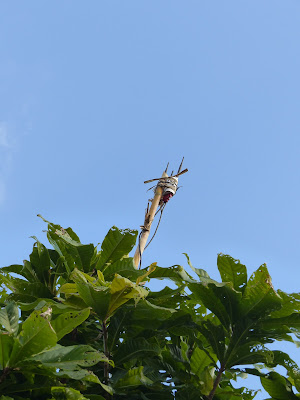A quick post in response to a few enquiries we have had recently, where folks have been asking about getting their hands on some prototype Serval Mesh Extender devices.
So far, we have only produced 50 of these units, which have our (hopefully) IP65/IP66 injection-moulded case, IP67 power/external radio cable, integrated solar panel controller and battery charger if you wish to operate them off-grid. Most of those are currently deployed in Vanuatu, or are in use in the lab here or with a few other partner organisations.
Although we are still in the process of testing them, they have already been in some interesting places in Vanuatu and beyond, as the images at the end of the post show.
Thus, we would like to gauge the interest in us having another production run, so that folks who would like to work with these experimental units, including to help us identify, document and fix any problems with them, can do so.
A reminder and warning: The devices would be experimental, and have known software issues that need to be resolved before they can be sensibly deployed. It is also possible that hardware issues will be found in the process, and that these units may well never be deployable by you in any useful way, i.e., cannot be considered as a finished product or fit for merchantability. Rather, you are being given the opportunity to purchase hardware that would allow you to participate in the ongoing development of these devices.
If you want to buy Mesh Extenders to use in a serious way, this is not the offer you are looking for. As soon as we are ready to make them commercially available, we will be sure to let everyone know, and will update this post as well.
Because of the small production size that we would anticipate for this, the per-unit price will likely be quite high -- potentially as high as AU$700 each (and you really need a pair for them to be useful). If we were able to get 100 or more manufactured in a single run, then this cost would come down, quite likely a lot. (But please note, this is not at all representative of the final price of these units when we hopefully bring them to market -- we intend that the end price to be a LOT lower than this. Again, the purpose of this current offer now is to provide early access that would support the finalisation of these devices, and allow us to get a few extra devices made for our internal use at the same time.)
So, given the above, is there any one else out there who would also like to get their hands on one or more Mesh Extenders, in your choice of Wholly White, Rather Red or Generally Grey?
(We realise the price at this stage is rather high, and that this might preclude interest from some folks from participating. During this pre-production stage, we have a couple of options to reduce the cost a little: First, if you already own an RFD900 or RFD868 radio, or want a Wi-Fi-only Mesh Extender, you can subtract AU$100 from the price. Second, if you want to make an offer contingent on a production run of at least 100 units, which should get the price down by AU$100 - AU$200 per unit (subject to confirming with our suppliers), you are welcome to indicate this. We will in any case come back to the community before we proceed with any production run.)





Once the price is sub AUD$100 I can help out.
ReplyDeleteWe're a multiple occupancy community of 25 households, in a valley with no mobile reception. We;d love to have a mesh extender located at a household up on the hill so as to be able to communicate in a bushfire or other emergency. But will have to wait till the price comes down.
ReplyDeleteThis is a possible application. Note you would need a Mesh Extender in Wi-Fi range of each household if you want them all to have coverage. Also, they create a stand-alone network, i.e., not connected to the outside world, so you would be able to communicate with one another, but not the outside world. This will likely change, as we are planning to integrate at least SMS with cellular networks, so that you could text from in a valley like that. In any case, I drop me an email, as it is helpful for us to understand your use case and need, as we can use this to inform our future development activities.
DeleteNice
ReplyDeleteI like your project it fits with my project, i have tried multiple ways to make an extenstender I have found multiple ways to make it work because it needs to intergrai with my project the only problem I'm having on making extenders work is not the code it's the transmitt power I get 3 watt transmitt 30 db gain received but 3 watt isn't much any ideas?
ReplyDeleteSo amazed with this serval mesh project which really suits people in rural villages for communication not only during disasters but for daily use as well. The beauty about this is free communication without any data charges.
ReplyDeleteWhen will the serval mesh extenders be commercialized?
ReplyDeleteThis is amazing, it also sounds like a technology where people can communicate even when there is no GSM coverage.
ReplyDeleteIs it still availabl for AUD$100?